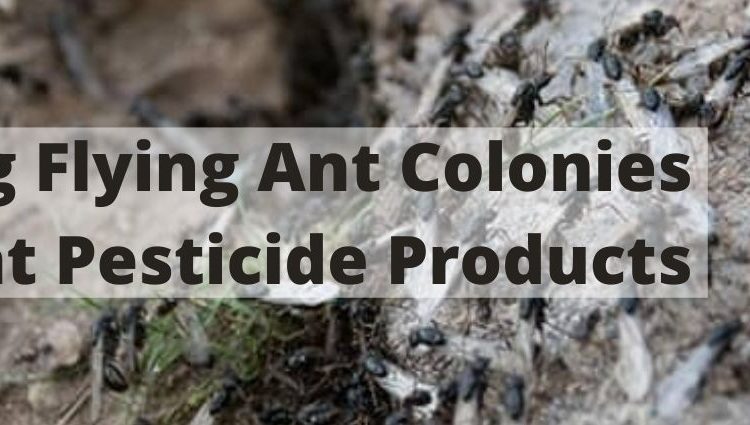Killing Flying Ant Colonies with Ant Pesticide Products
Flying ants are usually first noticed when they emerge from the ground in the early spring months. Since flying ants all emerge at once in a swarm, the sight can be disconcerting. Although flying ants pose no real danger to homeowners, many want to eliminate them anyway. In order to eliminate the flying ant, it is necessary to make sure that it is really an ant and not a flying terminate.
What are Flying Ants?
Flying ants are not a specific breed of ant. Instead, there are several species of ants that have flying members whose job it is to start new colonies. These flying ants are born with thin, papery wings and fly away from the main ant colony to start a new one.
Once the flying ants find a new location and mate, their wings fall off and they spend the rest of their lives on the ground. Flying ants are usually seen flying in swarms during the spring months and are often confused with flying termites, which they closely resemble.
Is it a Flying Ant or Termite?
The main way to tell the difference between a flying ant and a termite is to catch one of the insects and examine it closely. The most obvious identifying feature is that ants have a pinched waist, whereas a termite’s waist does not indent in the middle.
If the flying insects are termites, call a pest control company as termites are difficult to eradicate using store bought products.
Check Out: Carpenter Ants, Know Your Enemy
Control Ants with an Ant Pesticide
Walk outside and locate the hole in the ground that the flying ants are coming out of. This may take several minutes if there are already large swarms in the air. It is possible that the ants are emerging from several locations so try to identify all of the major ant holes.
Spray all visible flying ants with a liquid ant pesticide spray. It takes very little of the ant pesticide to kill the ants, so only a light spray is needed.
Killing the Colony
Apply a powdered ant pesticide to the area surrounding the ground holes to kill the underground colony. Sprinkle a generous amount of ant pesticide powder around the entrance of each of the main ground holes identified earlier. This will not kill the ants immediately. Instead, they will take the ant pesticide powder underground and feed it to the rest of the colony which will die within one week.
Wait one week and examine the ground holes for signs of activity. If ants are seen, apply an additional treatment of the ant pesticide powder to the ground holes.
Unlike termites or carpenter ants, flying ants pose no danger to humans and property and the swarms will usually only last for a few days until all of the winged insects have flown away.



Comments are closed, but trackbacks and pingbacks are open.